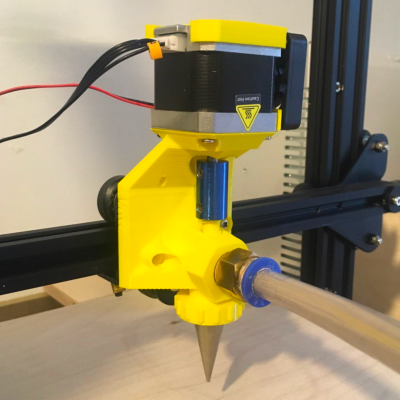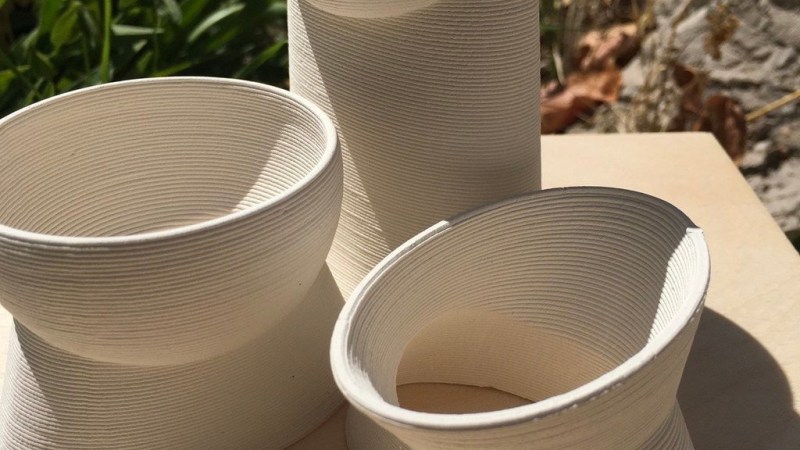When it comes to 3D printing clay, there are a lot of challenges to be met. An extruder capable of pushing clay is critical, and [davidsfeir] has an updated version suitable for an Ender 3 printer. This extruder is based on earlier designs aimed at delta printers, but making one compatible with an Ender 3 helps keep things accessible.

What’s special about a paste extruder that can push clay? For one thing, clay can’t be stored on a spool, so it gets fed into the extruder via a hose with the help of air pressure. From there, the clay is actually extruded with the help of an auger that takes care of pushing the clay down through the nozzle. The extruder also needs a way to deal with inevitable air bubbles, which it does by allowing air to escape out the narrow space at the top of the assembly while clay gets fed downward.
[davidsfeir] was greatly inspired by the work of clay-printing pioneers [Piotr Waśniowski] and his de-airing clay extruder, and [Jonathan Keep], who has documented 3D printing with clay comprehensively in a freely-available PDF.
There are so many different aspects to printing with clay or clay-like materials that almost every part is ripe for innovation. For example, we’ve seen wild patterns result from sticking a thumping subwoofer under a print bed.

















Now I can print a key engine in ceramic!
Who needs metal?
Jet Engine in ceramic
How about a jet engine for a kei car.
B^)
you could print a mold for one made of aluminium
Ooh! Wonder if it can even tolerate pastes that verge on porcelain paste, lime putty, or other various materials?
Couldn’t a more liquid clay going through a heated multi- stage extruder work better? There would be less air but it would take longer to print. Reading this flashed me back to my days with my Playdoh extruder…….. last week… 😆
HI, I am trying to do some Playdoh printing, do you have any tips regarding bed adhesion and slicer settings? My current settup is a syringe type with a 1.5 mm nozzle. Best regards
Hi, I have just started experimenting with Play Doh printing, do you have any tips on slicer settings and bed adhesion? I have big problems of getting the clay to stick to anything. My current settup is with a piston/syringe with a 1.5 mm nozzle using Cura to slice my model.
Depending on a few factors the ability to hand finish is very interesting. (Don’t)
I wonder how durable a fired piece is.
this interesting for printing mini city modells/maps on fixed points for blind people. hack the society for be more equal for all.
but they extrusion shape of the clay also reminds me of an old concept for a drinking cup for people with disabillitys, like parkinson. In the cup was a Breakwater (structure) to reduce the water sprinkle from trembling.
And why that would need clay in the first place?
Clay + heat = ceramic, very long lasting, durable.
But so is ABS, especially for something like a structure in a cup. Just because you can, doesn’t mean you should. Using ceramics for that purpose seems way outside the realm of necessary in terms of straight function.
If you’re trying to print a set of matched clay/ceramic cups where the form is as meaningful as the function then ok, go for it.
Outside that, seems unnecessary.
I wouldn’t want to put your ABS plastic cup in either the dishwasher or the microwave, and certainly not for something like hot milk or chocolate, where there’s lots of fats and sugars!
A ceramic item can last thousands of years. And it’s fancy mud, so when it goes to landfill, who cares?